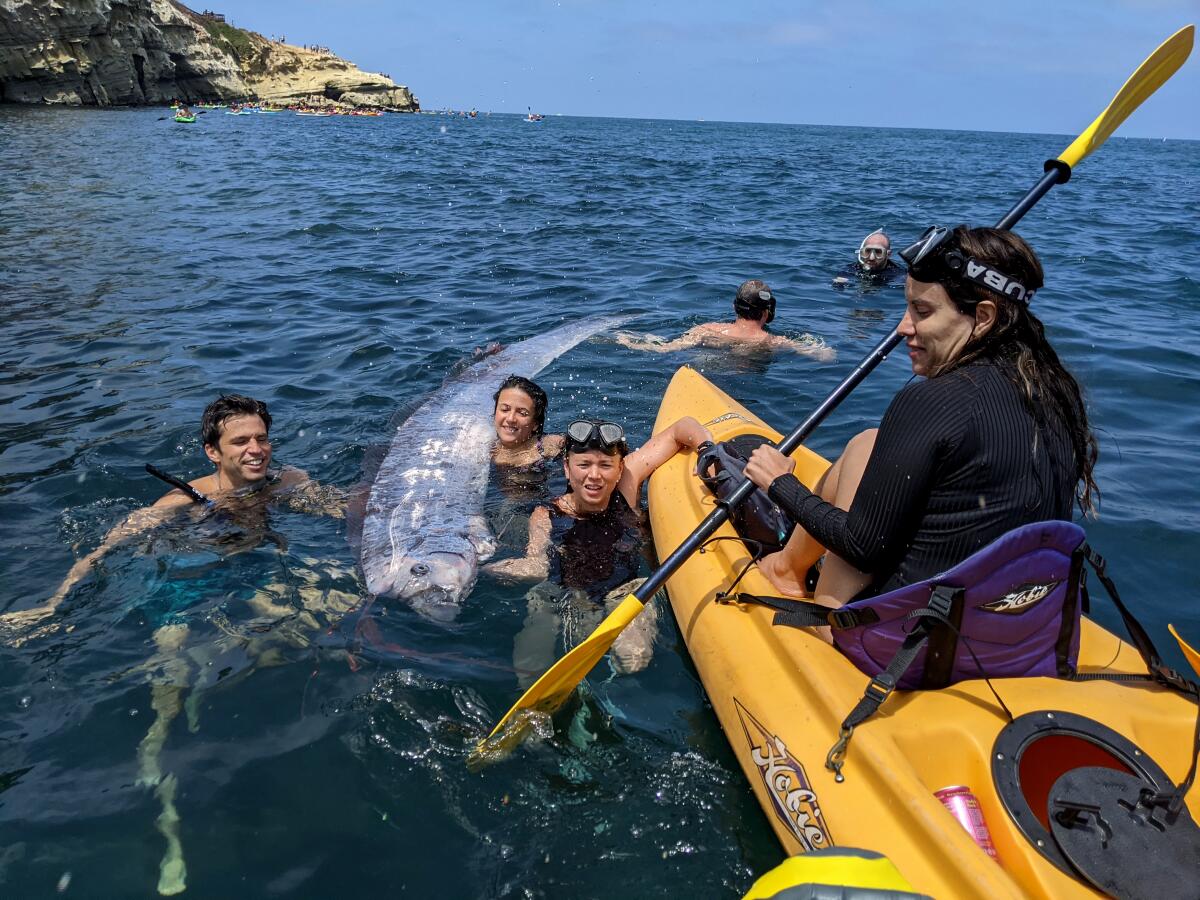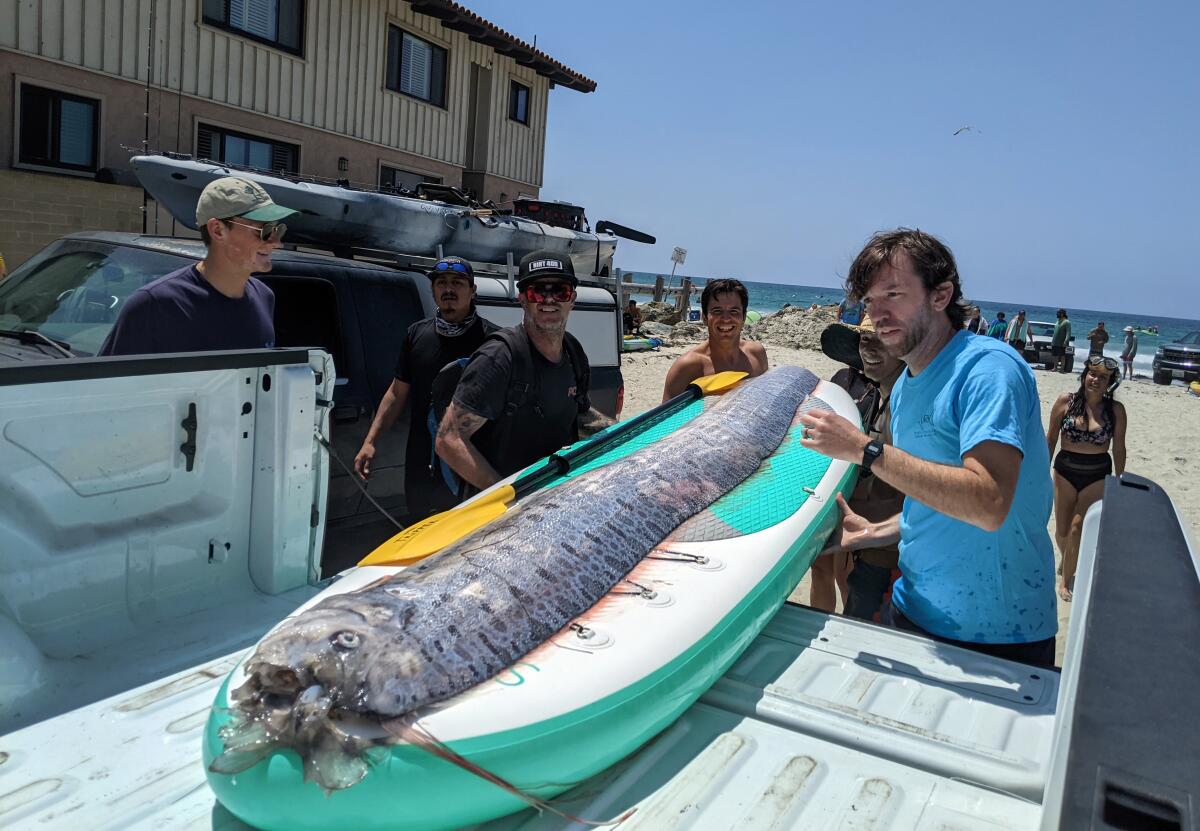A 12-foot-long harbinger of doom washed ashore in San Diego

- Share via
A group of friends exploring the waters off La Jolla Cove on Saturday came across a sea creature unlike anything they’d ever seen: a 12-foot-long rare fish from the depths of the ocean.
The giant oarfish, the largest bony fish in the world, was spotted floating — dead — just off San Diego, only the 20th such fish to wash up along the California coast since the early 1900s, according to Ben Frable, manager of the Marine Vertebrate Collection at UC San Diego’s Scripps Institution of Oceanography.
“They are not common here in California,” Frable said, adding that the long, ribbon-like fish are periodically found on beaches around the world, more frequently in the tropics. “These fish are generally living in the deep-sea, open-ocean environment.”
The science-minded group of kayakers and snorkelers immediately notified officials about their find, helping bring the lifeless oarfish onshore for future research.
“People have studied them, but we’ve very rarely interacted with them alive in their natural habitat,” Frable said. He said a team of scientists from Scripps and NOAA will perform a necropsy to try to understand how the fish died, as well as genetic testing to inform further research about the mysterious creatures’ anatomy and habitat and the food chain of the deep sea.
“It’s always been a fish of interest, this long, beautiful silver fish,” Frable said, mentioning its large eyes and red, mane-like crest above its head. “It definitely looks fanciful; it evokes the sea serpent mythology.”

And that lore may be the oarfish’s most notable claim to fame. It’s long been referred to as a doomsday fish, a reference that likely stems from Japanese folklore, which considered spotting such a fish a precursor to natural disasters, especially earthquakes.
Frable pointed to a 2019 study that found there was no correlation between an oarfish or other deep-sea fish washing ashore and an ensuing disaster, calling the link a “typical illusory correlation.”
Still, the oarfish, which can reach up to 30 feet long, continues to draw much interest. Anyone in Southern California interested in seeing one up close can visit the Natural History Museum of Los Angeles County, where an oarfish found near Catalina Island is on display.
This oarfish spotted in the La Jolla area will probably be preserved and stored in Scripps’ Marine Vertebrate Collection, home to approximately 2 million specimens, including oarfish both full and in parts, Frable said.
“I’m hoping that I’ll be able to preserve the fish in the collection here,” he said. “It will be part of the collection in some way. It’s just a very big fish.”
Officials recommend that anyone finding a unique sea creature alert lifeguards and notify the Scripps Institution of Oceanography at [email protected] or (858) 534-3624.
More to Read
Sign up for Essential California
The most important California stories and recommendations in your inbox every morning.
You may occasionally receive promotional content from the Los Angeles Times.











